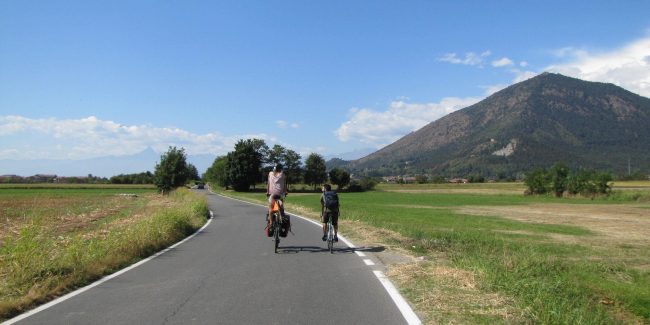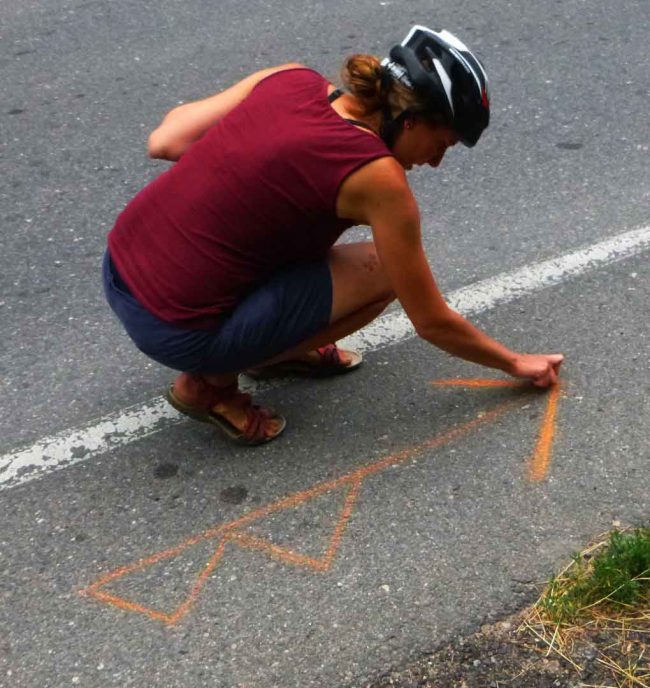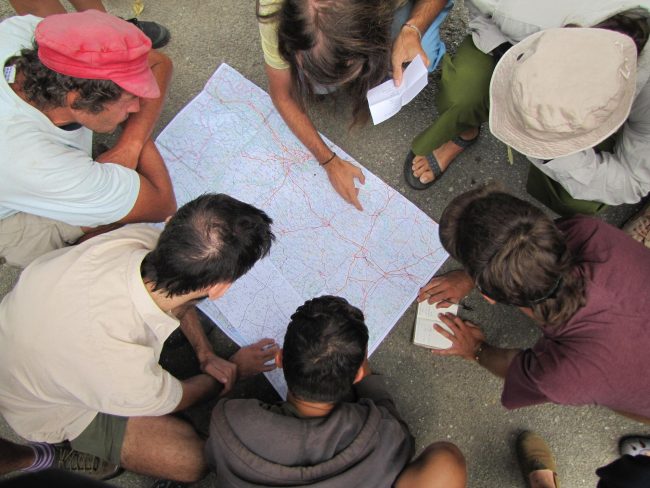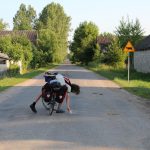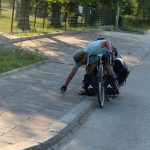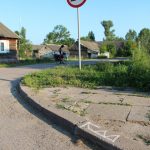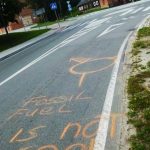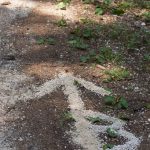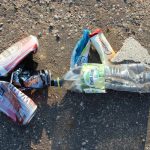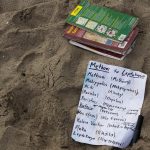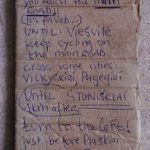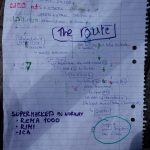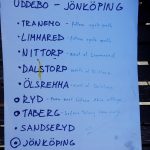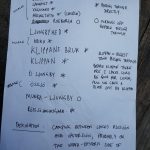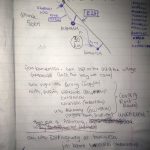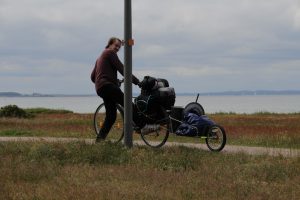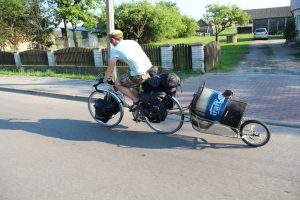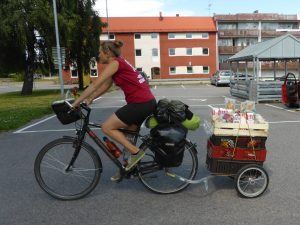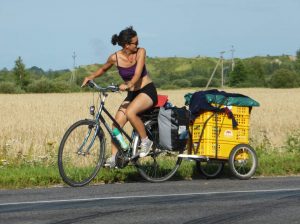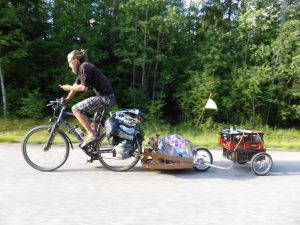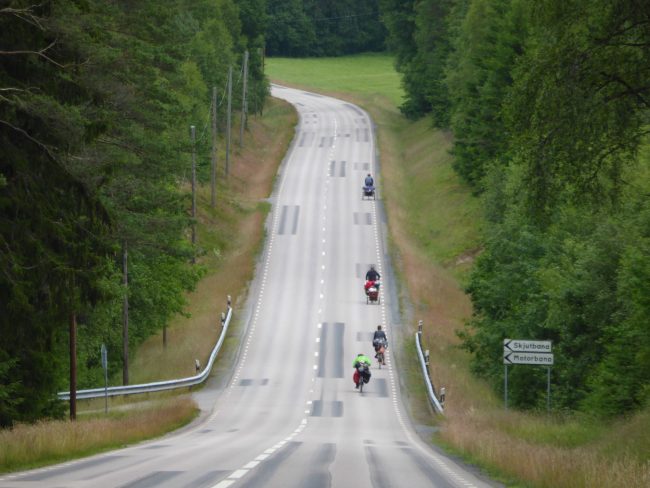 When the Ecotopia Biketour is moving, normally we cycle between 30 and 70 kilometers a day, depending on the quality of the roads and the difficulty of the terrain. At least every 3 cycling days we have a rest day. But often the distances between the projects, where we also stay some days, are shorter than 3 days of cycling. We don’t cycle together as the whole group all the time. We would have to stop every 5 minutes, waiting for someone peeing or stopping for whatever the reason is. Everybody can go on their own pace and take as many breaks as they want, usually in smaller groups and sometimes even alone.
When the Ecotopia Biketour is moving, normally we cycle between 30 and 70 kilometers a day, depending on the quality of the roads and the difficulty of the terrain. At least every 3 cycling days we have a rest day. But often the distances between the projects, where we also stay some days, are shorter than 3 days of cycling. We don’t cycle together as the whole group all the time. We would have to stop every 5 minutes, waiting for someone peeing or stopping for whatever the reason is. Everybody can go on their own pace and take as many breaks as they want, usually in smaller groups and sometimes even alone.
You will still meet the others on the way. But how do the cyclists then know where to go?
Our solution for that is a task called “scouting“. For each cycling day a couple of people voluntarily take up this task. They check the route a day before and try to find the best way either to the next fixed point where we want to go or if it takes more than a day to cycle, they look for an area on the way where it could be nice to wild camp (like next to a lake or a forest). There are different ways to “scout”: they can write simple “marzruta” notes (with a list of places that are passed by) and spread them around the group in the morning; write a more detailed description or draw a map so that the others can have a look during breakfast and make their own marzrutas. While on the way they mark the directions for the others to follow. Either they can draw signs on the road with a chalk or a piece of brick, or scratch them in the sandor „build“ some from sticks or stones or use some other creative means. The sign consist of an arrow with a “B” tail (B for Biketour). It can also make sense to mark other things on the way, such as water sources, swimming places, fruit trees or supermarkets. Another possibility, to mark the way, is to put Biketour-stickers on the road signs.
The scouts have the communal phone which they can use to call the next project if they get lost on the way there. Also people in the back can call them to ask about the route if they get lost.
For camping in the wild, the Scouts need to find a proper spot. They should call people in the tail in the afternoon to see how far behind people are, to avoid cycling too far and the other people arriving really late. The best wild-camping spot is one that has enough space for everybody to build their tents, a nearby water source (a public tap or a house to ask or a spring), some trees to find firewood and offer enough shade in the morning, and it should be easily accessible even for people pulling heavy trailers. If there are people living close by, it is better to ask them if it’s okay to camp there.
The scouts are the first to leave the starting point and also the first to arrive at the sleeping place. Thus they can already make some preparations for camping, such as collecting firewood.
The other end of the group is called the “tail“. The people in the tail carry the essential bike tools and the first-aid kit and always stay behind the other people. If someone gets stuck, the tail reaches them and helps them to fix their bikes or helps them to find another solution. The tail carries the second communal phone in order to be in contact with the scouts and to be available, if someone has a problem. The people are advised to cycle before the tail unless they are fine with becoming a part of it.
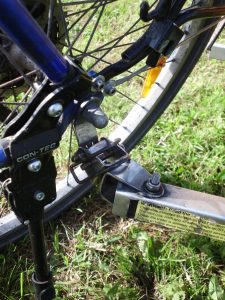 Another very important task is to carry communal things. Our food and dishes and all the other important things travel with us on trailers. They are an integral part of the biketour as they support our philosophy of living in a community, so they need to be handled with love and care. These trailers can be attached to almost every bike quite effortlessly. They are pulled each cycling day by someone else. This task can also be shared half way.
Another very important task is to carry communal things. Our food and dishes and all the other important things travel with us on trailers. They are an integral part of the biketour as they support our philosophy of living in a community, so they need to be handled with love and care. These trailers can be attached to almost every bike quite effortlessly. They are pulled each cycling day by someone else. This task can also be shared half way.
Currently the biketour has 2 trailers (one got missing 3 years ago). A smaller 2-wheel trailer that is attached to the axle of the rear wheel. You take it out, add the small metal hitch and then hook in the trailer. It is quite stable and makes you feel like a truck when you cycle. ;)
The other is a one-wheel trailer which comes with a special rear wheel axle. You need to take out yours and replace it by the one that is made for attaching to the trailer. While cycling, you don’t feel much a difference with this one. You just have to be more careful with balancing its weight when you are slowing down. Some people even get emotionally attached to this one after some time…
Sometimes people pull their own trailers which still doesn’t stop them from attaching a second one (check the trailer train in the last photo!).






